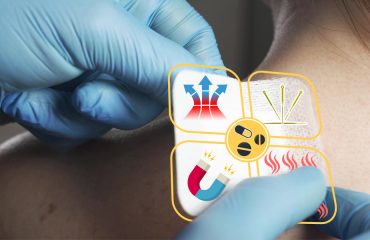China IVD Reagent Registration and Review Guidelines have been recently updated by the Center for Medical Device Evaluation (CMDE) of the National Medical Products Administration (NMPA) affecting not only new registrations but also registration updates and modifications. Six guidelines came into effect on September 28, 2022.
List of updated China IVD reagent registration and review guidelines
Guidelines for Registration and Review of the Analytical Performance of Qualitative IVD Reagents
- The qualitative assay in vitro diagnostic reagents described in this guideline are in vitro diagnostic reagents that provide only two test results (i.e., positive/negative or reactive/non-reactive). These include:
- assays without quantitative reporting
- and assays based on quantitative testing followed by a threshold determination of the result.
- These guidelines do not apply to semi-quantitative test reagents and quantitative test reagents with graded reporting or titers where the result is reported as negative, 1+, 2+ or 3+.
Guidelines for Registration and Review of Reference Interval Determination of In Vitro Diagnostic Reagents
- These guidelines apply to studies to determine reference intervals for quantitative testing of in vitro diagnostic reagents. While this document focuses on reference intervals relevant to healthy populations, applicants may use similar methods to establish reference intervals for other types of reference populations, such as reference intervals for other specific physiological or pathological conditions.
- These guidelines do not apply to:
- qualitative and semi-quantitative assays
- assays for drug concentration monitoring purposes
- assays related to pathogenic pathogens
- the determination of medical decision levels.
- If you already have a domestically recognized, unified reference interval and medical decision level of the test program, you can no longer establish a reference interval, such products should be evaluated with a focus on standardization.
Guidelines for Registration and Review Quality Control Products – Quality Control Product Assignment Studies
- These guidelines apply to fixed-value QCs used with in vitro diagnostic reagents, which can be registered and declared separately or combined with in vitro diagnostic reagents used in conjunction with them to apply for registration. It can be applied to a single test item or to multiple test items (i.e. composite QCs). This article is the general requirements for the study of quality control assignments.
- A Control Material is a substance that is expected to be used by its manufacturer to verify the performance characteristics of an in vitro diagnostic medical device.
- A substance, material or article that is expected to be used by its manufacturer to validate the performance characteristics of a diagnostic medical device. It is also commonly referred to as a quality control substance or quality control article and is referred to throughout this document as a quality control article. The uses of QCs include test system performance validation, intra-laboratory quality control and inter-laboratory quality evaluation.
- QCs are used in conjunction with in vitro diagnostic reagents for the quality control of test procedures.
- QCs can be divided into fixed and non-fixed QCs, depending on whether or not the analyte’s marker value is given. A fixed-value QC is a target value and or range that is assigned by the manufacturer through an appropriate analytical method or process.
- These guidelines do not apply to QCs used for inter-compartmental quality evaluation.
- These guidelines apply to the registration and change of registration of relevant products, including some of the requirements in the declaration materials. Other matters not covered should be in accordance with the Administrative Measures for Registration and Filing of In Vitro Diagnostic Reagents (Decree No. 48 of the State Administration of Market Supervision and Administration) and other relevant regulatory requirements.
Guidelines for Registration and Review of Hepatitis E Virus IgM/IgG Antibody Detection Reagents
- These guidelines apply to reagents for the in vitro qualitative detection of IgM and/or IgG antibodies to hepatitis E virus in human samples (e.g., serum, plasma, whole blood) based on the principle of antigen-antibody reaction, including immunochromatographic, enzyme-linked immunoassay or chemiluminescence. In combination with clinical and other laboratory indices, the reagents can be used as an aid in the diagnosis of hepatitis E virus infection.
Guidelines for the Review of Preclinical Registration of Human Immunodeficiency Virus Antigen and Antibody Detection Reagents
- These guidelines apply to the use of immunochromatography, chemiluminescence, time-resolved immunofluorescence and other immunological methods, in vitro qualitative detection of human serum, plasma, whole blood, oral mucosal exudate, urine and other human immunodeficiency virus antibody detection reagents and antigen-antibody combination detection reagents performance evaluation.
- This guideline does not apply to the national legal blood source screening with HIV detection reagents.
Guidelines for the Registration and Review of Epstein-Barr Virus Antibody Detection Reagents
- These guidelines apply to the in vitro qualitative detection of EBV antibodies in human samples derived from serum or plasma using immunological methods such as enzyme-linked immunoassay and chemiluminescence, and their clinical intended use is as follows.
- adjunctive diagnosis of EBV infection: in addition to primary EBV infection that can cause infectious mononucleosis, EBV can also cause chronic active EBV infection. The main indicators include EBV-VCA-IgM, EBV-VCA-IgG, and EBV-NA-IgG.
- Adjunctive diagnosis of nasopharyngeal carcinoma: EBV is associated with nasopharyngeal carcinoma, and some EBV antibodies are also markers currently used clinically for the adjuvant diagnosis of nasopharyngeal carcinoma.
- This guideline is not applicable to screening for nasopharyngeal carcinoma.
Implications for medical device manufacturers
Applicants should refer to the new guidelines when preparing and writing medical device registration applications. The guidelines also serve as a reference for the NMPA’s Center for Medical Device Evaluation when reviewing applications for new registration or when updating or modifying existing registrations.
Further information
Click here for the full list of China IVD reagent Registration and Review Guidelines.
If you would like more information on how the new guidelines affect the review of your IVD reagent registration, or for information on our medical device and IVD registration services, please contact us.

 Deutsch
Deutsch  Italiano
Italiano  Français
Français  日本語
日本語  한국어
한국어 



